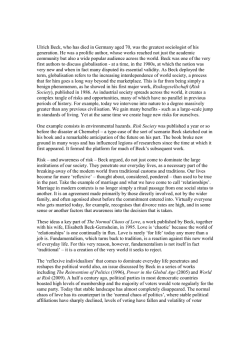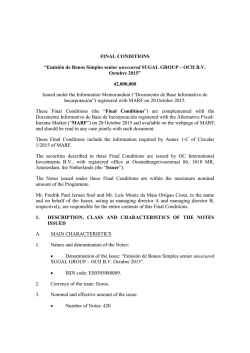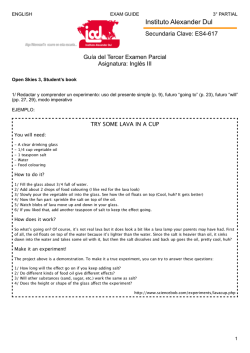
Initial Assessment of Patients With Contact Eczema
Documento descargado de http://www.actasdermo.org el 08/11/2016. Copia para uso personal, se prohíbe la transmisión de este documento por cualquier medio o formato. CASE AND RESEARCH LETTERS however, found less difference in CK5/6 positivity between the 2 areas, and this, together with our case, would support Kazakov’s hypothesis. The pattern of immunoreactivity to another epithelial marker, p63 (of the p53 family, localized to the nucleus9 and expressed in cells derived from the matrix and from the outer root sheath in tumors with follicular differentiation10 ), also does not differ between the 2 zones,4 as observed in our case. The differential diagnosis should include basaloid cell tumors with follicular differentiation. For many authors, these tumors form a spectrum.2,3 They present common elements and are classified according to which element predominates. Trichoblastoma, mentioned above, is characterized by lobules of basaloid cells with no connection with the epidermis, with peripheral palisading, and no retraction clefts. It forms structures similar to hair bulbs and dermal papillae, with no areas of pale cells with an onion skin appearance. The feature that differentiates trichoblastoma from trichoepithelioma is the predominance of the formation of corneal cysts. Trichilemmoma is connected to the epidermis and is characterized by clear cells with peripheral palisading. Finally, basal cell carcinoma is differentiated by its retraction cleft between the epithelium and the stroma and by its connection to the epidermis. Despite the nonspecific clinical manifestations of this benign neoplasm, presenting as a deep solitary nodule with no epidermal involvement, its histology is characteristic and enables us to differentiate it from trichoblastoma, either as a different entity or as a variant. In the case we have presented, we draw attention to the stability of the lesion over a number of years, followed by rapid growth over a period of months, with no histologic evidence of malignancy. Conflicts of Interest The authors declare that they have no conflicts of interest. Initial Assessment of Patients With Contact Eczema夽 Valoración inicial del paciente con eczema de contacto To the Editor: Eczema is an inflammatory skin reaction that can have different etiologies. It is characterized clinically by pruritus and polymorphous skin lesions that can progress successively through erythema, macules, papules, edema, vesicles or blisters, excoriation, erosions, scabs, flaking, hyperkeratosis, lichenification, and fissures.1 Histologically it is characterized by spongiosis; other findings include acanthosis, parakeratosis, and a lymphocytic perivascular infiltrate 夽 Please cite this article as: Imbernón-Moya A, Ortiz-de Frutos FJ, Delgado-Márquez AM, Vanaclocha-Sebastián F. Valoración inicial del paciente con eczema de contacto. Actas Dermosifiliogr. 2016;107:791---793. 791 References 1. Sau P, Lupton GP, Graham JH. Trichogerminoma. Report of 14 cases. J Cutan Pathol. 1992;19:357---65. 2. Kazakov DV, Kutzner H, Rütten A, Dummer R, Burg G, Kempf W. Trichogerminoma: A rare cutaneous adnexal tumor with differentiation toward the hair germ epithelium. Dermatology. 2002;205:405---8. 3. Tellechea O, Reis JP. Trichogerminoma. Am J Dermatopathol. 2009;31:480---3. 4. Kim M, Choi M, Hong JS, Lee JH, Cho S. A case of trichogerminoma. Ann Dermatol. 2010;22:431---4. 5. Chen LL, Hu JT, Li Y. Trichogerminoma a rare cutaneous follicular neoplasm with indolent clinical course: Report of two cases and review of literature. Diagn Pathol. 2013;8:210. 6. Pozo L, Diaz-Cano SJ. Trichogerminoma: Further evidence to support a specific follicular neoplasm. Histopathology. 2005;46:108---10. 7. Grouls V, Hey A. Trichoblastic fibroma (fibromatoid trichoepithelioma). Pathol Res Pract. 1988;183:462---8. 8. Moll R, Divo M, Langbein L. The human keratins: Biology and pathology. Histochem Cell Biol. 2008;129:705---33. 9. Fuertes L, Santonja C, Kutzner H, Requena L. Immunohistochemistry in dermatopathology: A review of the most commonly used antibodies (part I). Actas Dermosifiliogr. 2013;104:99---127. 10. Ivan D, Hafeez Diwan A, Prieto VG. Expression of p63 in primary cutaneous adnexal neoplasms and adenocarcinoma metastatic to the skin. Mod Pathol. 2005;18:137---42. B. Lozano-Masdemont,a,∗ V.J. Rodríguez-Soria,a L. Gómez-Recuero-Muñoz,a V. Parra-Blancob a Department of Dermatology, Hospital General Universitario Gregorio Marañón, Madrid, Spain b Department of Pathology, Hospital General Universitario Gregorio Marañón, Madrid, Spain Corresponding author. E-mail address: [email protected] (B. Lozano-Masdemont). ∗ in the upper dermis that may show epidermotropism and that includes a variable number of eosinophils.2 Contact eczema develops when the skin surface comes into contact with an exogenous substance. Irritant contact eczema (ICE) accounts for 80% of cases and is due to a local toxic effect caused by single or repeated contact with irritant substances. It is limited to the area of exposure in the majority of cases. ICE most commonly affects hands (80%) and face (10%).3,4 Allergic contact eczema (ACE) accounts for the remaining 20%. This is a delayed hypersensitivity reaction triggered by contact with a substance to which the patient has previously become sensitized. ACE develops in the area of exposure and occasionally also at distant sites.5 The clinical manifestations can be similar in the 2 forms of contact eczema, and a detailed medical history and physical examination are therefore essential in the search for the main risk factors.1,3---9 In the literature, we have found no descriptions of a protocol for the initial clinical evaluation of this type of patient. The German clinical guideline for hand eczema proposes a detailed medical history and meticulous physical Documento descargado de http://www.actasdermo.org el 08/11/2016. Copia para uso personal, se prohíbe la transmisión de este documento por cualquier medio o formato. 792 examination (grade A recommendation), paying particular attention to the site and morphology of the skin lesions.6 We therefore present our standard approach to the first consultation in the Eczema Unit of Hospital 12 de Octubre in Madrid, Spain: a) Individual characteristics of the eczema1,3---9 : initial site, disease duration, symptoms (pruritus, pain, soreness), clinical behavior and extension, clinical course (persistent or intermittent), exacerbations and remissions, previous episodes of eczema, aggravating factors, seasonal variations, previous treatments, and relationship with weekends, holidays, periods off work, and exposure to sunlight. b) Predisposing factors: --- Age and sex: ICE is more common in women, children, and the elderly.3,4,7 --- Past history of allergy and supporting additional tests.7 --- A personal or family history of atopic dermatitis, asthma, or allergic rhinoconjunctivitis is associated with a higher risk of ICE.3,4,7 --- Past history of other dermatoses: Seborrheic dermatitis is associated with an increase in the levels of the proinflammatory cytokine interleukin-1␣, leading to a higher risk of ICE.3 --- Genetic factors: Polymorphism of tumor necrosis factor-308 and mutations of the filaggrin gene probably constitute a risk factor for ICE.7 c) Factors related to exposure: --- Past and present occupational and domestic exposure (Table 1)1,3---5 : Determine the use of personal protection measures, such as gloves, goggles, face masks, and protective clothing. --- Exposure to irritant substances (Table 2).3,4 --- Work in a moist environment: This is defined as exposure to water for more than 2 hours a day, hand washing more than 20 times a day, or the use of gloves for more than 2 hours a day. --- Leisure activities and hobbies. --- Use of skincare products, perfumes, cosmetics, metals, topical medicines. Table 1 Occupations Most Commonly Associated With Contact Eczema. Hairdressing Bakery Meat processing Fishing Health professionals (physicians, dentists, nurses, auxiliaries) Veterinary surgeons Cleaning Florists Metallurgical industry Agriculture Food processing and catering Printing and painting Mechanical engineering Construction Adapted from Cohen DE and Jacob SE,1 Cohen DE and de Souza A,3 Wilkinson SM and Beck MH,4 and Beck MH and Wilkinson SM.5 CASE AND RESEARCH LETTERS We also present our standard procedure for complete physical examination: --- Description of the eczematous lesions1,3---6,9 : site, pattern (acute, subacute, chronic), distribution (single, patchy, linear, diffuse, disseminated), morphology, intensity, size, palpation, ulceration, scabs, signs of superinfection, hyperkeratosis, and lichenification. --- Complete dermatologic examination, including scalp, intertriginous areas, palms, soles, and nails. --- Thorough inspection for clinical signs of dermatophytosis, psoriasis, and atopy (Table 3).1,3---5,10 A number of differential diagnoses must be considered in patients with a pruritic erythematous skin rash with eczematous lesions, including seborrheic dermatitis, atopic dermatitis, psoriasis, erythematous rosacea, asteatotic eczema, dyshidrotic eczema, dermatitis herpetiformis, lichen simplex, dermatophytosis, scabies, and mycosis fungoides.1---5 The information obtained can help to guide the choice of diagnostic procedures required, such as patch tests, prick tests, culture, and skin biopsy.1---9 In conclusion, the Table 2 The Characteristics of Irritant Substances. Most common irritants: Soaps Detergents Cleaning products Water Organic solvents Oxidizing and reducing agents Cutting oils Acid and alkaline substances Plants Pesticides Physical and chemical characteristics: Molecule size Ionization Polarity Solubility Volatility Potential pH Conditions of exposure: Concentration Volume Duration of contact Repetition Environmental factors: Temperature Meteorological conditions Friction Humidity Occlusion Trauma Adapted from Cohen DE and de Souza A3 and Wilkinson SM and Beck MH.4 Documento descargado de http://www.actasdermo.org el 08/11/2016. Copia para uso personal, se prohíbe la transmisión de este documento por cualquier medio o formato. CASE AND RESEARCH LETTERS Table 3 Signs of Atopy. Xerosis Ichthyosis vulgaris Keratosis pilaris Follicular prominence Hyperlinearity of the palms and soles Double palpebral fold Palpebral hyperpigmentation associated with edema and lichenification Horizontal folds in the central region of the anterior neck Thinning or absence of the lateral portion of the eyebrows White dermographism Pityriasis alba Lichenification on the dorsum of the hands and fingers and of the anatomical snuffbox Areolar eczema Digital pulpitis Juvenile plantar dermatitis Atopic cheilitis Prurigo simplex Adapted from Cohen DE and Jacob SE,1 Cohen DE and de Souza A,3 Wilkinson SM and Beck MH,4 Beck MH and Wilkinson SM,5 and Bieber T and Bussmann C.10 aim of this article has been to present the initial clinical evaluation guideline used in our center in the hope that it will help dermatologists in their evaluation of patients with contact eczema. The medical history and dermatologic examination will orient the diagnosis and the search for the etiology, will establish the relevant additional tests, and will facilitate patient education. The German guideline recommends secondary prevention measures in high-risk groups through avoidance of exposure to known irritants and allergens by the use of appropriate skin protection (level B evidence).6 Finally, the role of the dermatologist is essential in the identification of high-risk patients and the adoption of appropriate primary and secondary measures of prevention. Conflicts of Interest The authors declare that they have no conflicts of interest. Clear Cell Acanthoma of the Areola and Nipple夽 Acantoma de células claras de la aréola y el pezón To the Editor: Clear-cell acanthoma was described by Degos et al.1 in 1962 as a benign epidermal tumor. It usually manifests clinically as 夽 Please cite this article as: Hidalgo-García Y, Gonzálvo P, MalloGarcía S, Fernández-Sánchez C. Acantoma de células claras de la aréola y el pezón. Actas Dermosifiliogr. 2016;107:793---795. 793 References 1. Cohen DE, Jacob SE. Allergic Contact Dermatitis. In: Wolff K, Goldsmith LA, Katz SI, Gilchrest BA, Paller AS, Leffell DJ, editors. Fitzpatrick’s Dermatology in General Medicine. New York: McGraw-Hill; 2008. p. 135---45. 2. Johnston RB. Weedon’s Skin Pathology Essentials. 3rd ed. Edinburgh: Elsevier Limited; 2012. 3. Cohen DE, de Souza A. Irritant Contact Dermatitis. In: Bolognia JL, Jorizzo JL, Schaffer JV, editors. Dermatology. Philadelphia: Elsevier Limited; 2012. p. 249---59. 4. Wilkinson SM, Beck MH. Contact Dermatitis: Irritant. In: Burns T, Breathnach S, Cox N, Griffiths C, editors. Rook’s Textbook of Dermatology. Chichester, UK: Wiley-Blackwell; 2010. p. 1071---96. 5. Beck MH, Wilkinson SM. Contact Dermatitis: Allergic. In: Burns T, Breathnach S, Cox N, Griffiths C, editors. Rook’s Textbook of Dermatology. Chichester, UK: Wiley-Blackwell; 2010. p. 1097---202. 6. Diepgen TL, Andersen KE, Chosidow O, Coenraads PJ, Elsner P, English J, et al. Guidelines for diagnosis, prevention and treatment of hand eczema. J Dtsch Dermatol Ges. 2015;13: 1---22. 7. Schnuch A, Carlsen BC. Genetics and Individual Predispositions in Contact Dermatitis. In: Johansen JD, Frosch PJ, Lepoittevin JP, editors. Contact Dermatitis. Berlin: Springer; 2011. p. 13---42. 8. Josefson A, Färm G, Meding B. Validity of self-reported nickel allergy. Contact Dermatitis. 2010;62:289---93. 9. Bernstein DI. Contact dermatitis for the practicing allergist. J Allergy Clin Immunol Pract. 2015;3:652---8. 10. Bieber T, Bussmann C. Atopic Dermatitis. In: Bolognia JL, Jorizzo JL, Schaffer JV, editors. Dermatology. 3rd ed. Philadelphia: Elsevier Limited; 2012. p. 203---17. A. Imbernón-Moya,a,∗ F.J. Ortiz-de Frutos,b A.M. Delgado-Márquez,b F. Vanaclocha-Sebastiánb a Servicio de Dermatología, Hospital Universitario Severo Ochoa, Leganés, Madrid, Spain b Servicio de Dermatología, Hospital 12 de Octubre, Madrid, Spain Corresponding author. E-mail address: adrian [email protected] (A. Imbernón-Moya). ∗ a single, slow-growing, dome-shaped reddish papule or nodule with a peripheral desquamating collarette. The surface shows fine desquamation and a vascular pinpoint pattern and it has a tendency to bleed on minimal trauma. Clearcell acanthoma usually arises on the distal areas of the legs of middle-aged or elderly persons, and its diameter varies between 5 and 20 mm.2 However, atypical sites and clinical forms and multiple lesions have been described, and even spontaneous regression.2---4 This, together with its histological characteristics, has led to a discussion of whether it is a benign tumor or reactive hyperplasia secondary to chronic inflammation; even the term clear-cell acanthosis has been proposed.3 Histology is characteristic, with a well-defined area of psoriasiform epidermal hyperplasia, in which the keratinocytes present a pale cytoplasm. There are interposed thick and thin layers, a tendency to acanthosis,
© Copyright 2025






